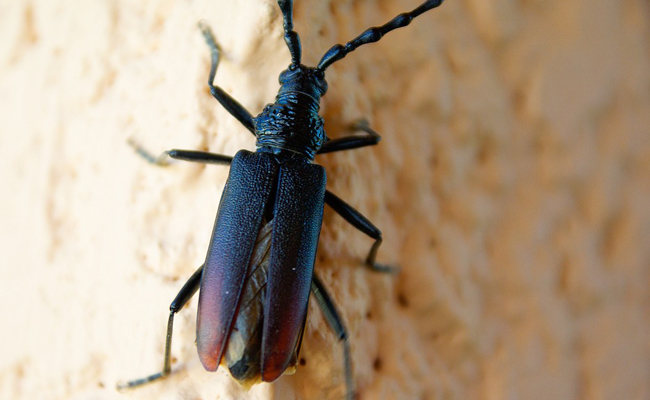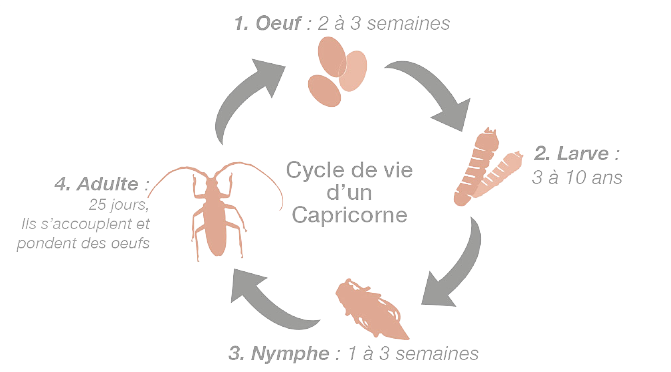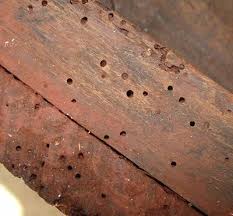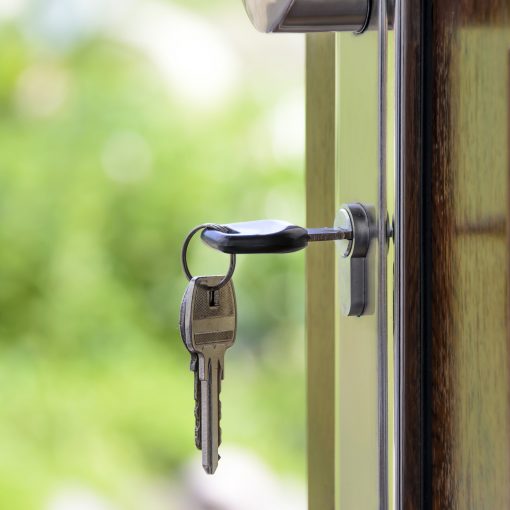Who is the Capricorn?
The capricorn is one of the insects woodborers which feed on softwoods, causing major damage to houses. Of the 250 species present in FranceOnly four species can grow on wooden materials. The European spruce longhorn beetle houses est la seule espèce s’attaquant aux softwoodThe other species consume deciduous species.

What does a capricorn look like?
The capricorn is distinguished by its very dark brown colour, almost black. The six-legged adult measures between 10 mm and 20 mm and the female is generally larger. large. Its flattened body is dotted with shiny black spots and has hair on the front part of the body, giving it a hairy appearance. Its elytra (rigid forewings protecting the hindwings) have a burgundy red tip. It is the very long antennas that the insect got its name of longhorned beetle. The larva is white in colour ivory and can reach 25 mm in length. It should be noted that the woodworm hardly ever flies.

Source: callisto-preservation.fr
The life cycle of the capricorn
The life cycle of the capricorn revolves around three phases.
- The larva. Between one and three weeks after hatching, the eggs, which have become larvae, will gnaw on the wood by digging galleries for several years in order to feed. This process varies on average from three to five years (up to ten years for some species), depending on various criteria: heat..., nutritional qualities of the wood, hygrometry... ;
- The nymph. In the summer of the fourth year, the larva will moult into the pupal stage, which lasts four to six weeks and takes on its adult form (imago) around September ;
- The adult. The adult capricorn hibernate jusqu’au printemps suivant et ne sortira que pour se reproduire. Après la reproduction, l’imago a une espérance de vie d’un mois seulement.
Damage caused by the capricorn
During his life as a larvaThe insect creates a network of galleries with its strong mandibles at a speed of 8 to 10 mm per day. Less devastating than other wood borers (such as the termite), the capricorn attacks wooden structures of houses for several years and can, as such, be a major cause of death, weaken a building considerably. If the damage is discovered late, the repairs to be carried out can be considerable.

How to detect the presence of longhorned beetles?
As with termites, the presence of the capricorn beetle can go unnoticed for a long time because the insect usually hides in the wooden framework, leaving the house to be built. intact the surface. However, house longhorn beetles leave characteristic traces that can be detected through :
- Small oval holes 8 to 10 mm wide on the surface of wooden frames: skirting boards, beams, frames, door towers, etc. ;
- From furrows architectural elements within the wood;
- From the sawdust and excrement on the ground;
- The noise A shrill squeaking sound that the larva makes when rubbing its head against its protonum (first part of the thorax) while feeding on wood.




